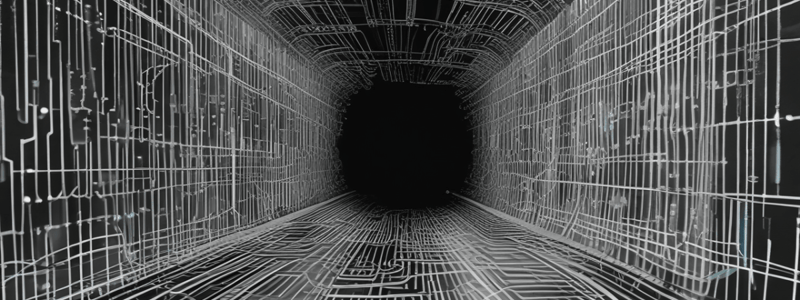Podcast
Questions and Answers
What are the three main functions of a signal processor?
What are the three main functions of a signal processor?
Filtering, detection, and compression
What is the purpose of filtering in a signal processor?
What is the purpose of filtering in a signal processor?
To eliminate frequencies outside the echo bandwidth while retaining those that are most useful.
What is detection (demodulation) in a signal processor?
What is detection (demodulation) in a signal processor?
The conversion of echo voltages to video form.
What is the purpose of compression in a signal processor?
What is the purpose of compression in a signal processor?
What is the function of an ultrasound transducer?
What is the function of an ultrasound transducer?
What is the core component of an ultrasound transducer?
What is the core component of an ultrasound transducer?
What is the typical material used to make a piezoelectric crystal or ceramic element?
What is the typical material used to make a piezoelectric crystal or ceramic element?
How many main components does an ultrasound transducer typically consist of?
How many main components does an ultrasound transducer typically consist of?
What type of materials can be used in the transducer's active element?
What type of materials can be used in the transducer's active element?
Why is the thickness of the piezoelectric element important?
Why is the thickness of the piezoelectric element important?
What is the purpose of the damping (backing) block?
What is the purpose of the damping (backing) block?
What is the function of the matching layer?
What is the function of the matching layer?
What is the typical thickness of the active element and each matching layer?
What is the typical thickness of the active element and each matching layer?
What is the purpose of the housing?
What is the purpose of the housing?
What are transducer arrays?
What are transducer arrays?
What is the difference between linear and convex transducer arrays?
What is the difference between linear and convex transducer arrays?
Flashcards are hidden until you start studying
Study Notes
Signal Processor
- Performs three main functions: filtering, detection, and compression
- Filtering eliminates frequencies outside the echo bandwidth, retaining useful ones
- Detection converts echo voltages to video form
- Compression decreases amplitude difference between smallest and largest signals
Signal Processor Functions
Filtering
- Eliminates frequencies outside echo bandwidth
- Retains useful frequencies in a given operation type
Detection
- Converts echo voltages to video form
- Echo voltages are in radio frequency (RF) form, converted to amplitude form for storage and display
Compression
- Decreases amplitude difference between smallest and largest signals
- Operator-adjustable as a dynamic range control
- Assigns weak echo amplitudes to zero or strongest to maximum
Ultrasound Transducer
- Converts electric energy to ultrasound energy and vice versa
- Piezoelectric elements convert electric voltages to ultrasound pulses and returning echoes to voltages
- Consists of five main components: crystal/ceramic element, positive and ground electrodes, matching layer, damping block, and housing
Transducer Components
Crystal/Ceramic Element
- Made of lead zirconate titanate (PZT) or other materials
- Can be a single piece or part of a broadband, multi-element design
Positive and Ground Electrodes
- Allow for electrical connection
- Positive electrode on the back of the element, ground electrode on the front
Damping (Backing) Block
- Absorbs ultrasound energy directed backward and attenuates stray signals
- Reduces pulse duration and spatial pulse length, improving resolution
Matching Layer
- Reduces reflections at the interface between the transducer element and body tissues
- Employs materials with intermediate acoustic impedances
Housing
- Provides electrical insulation and protection of the element
- Includes a plastic case, metal shield, and acoustic insulator
Transducer Arrays
- Assemblies with several transducer elements
- Elements are rectangular and arranged in a straight line (linear) or curved line (convex)
Studying That Suits You
Use AI to generate personalized quizzes and flashcards to suit your learning preferences.




